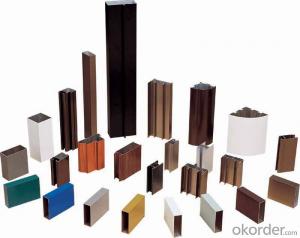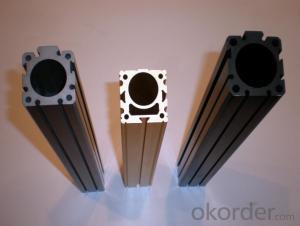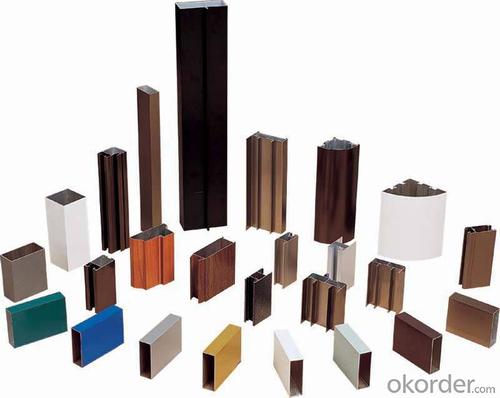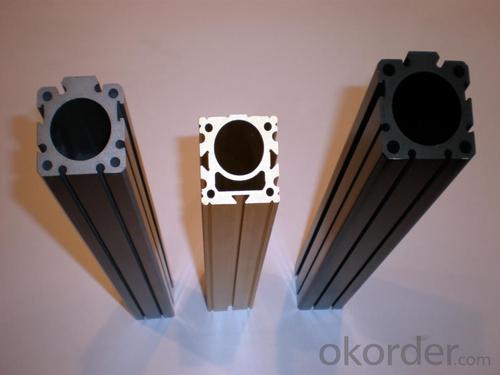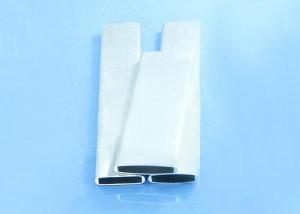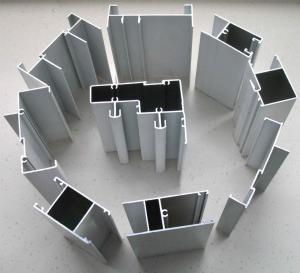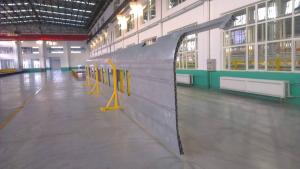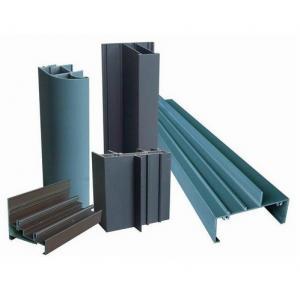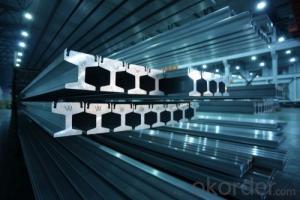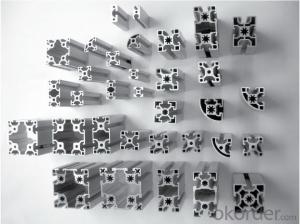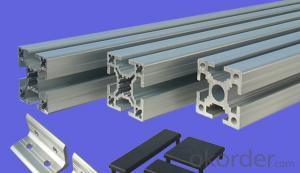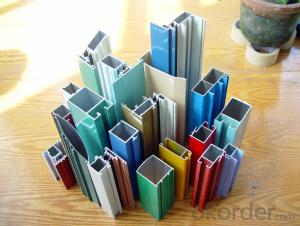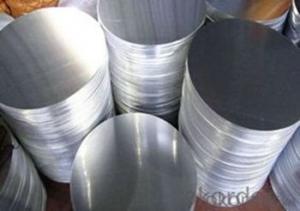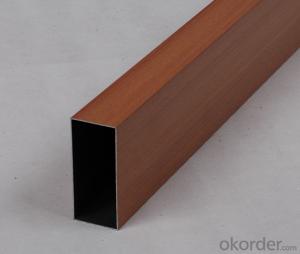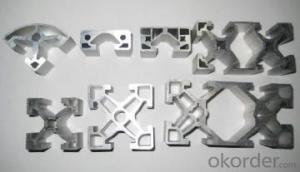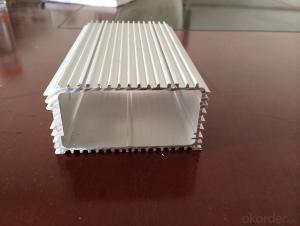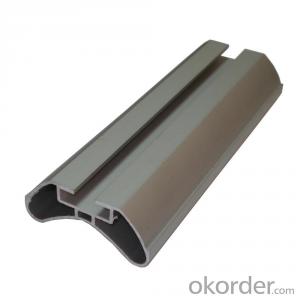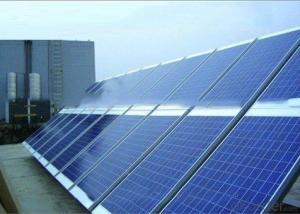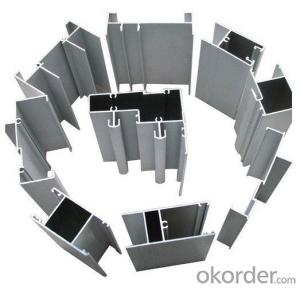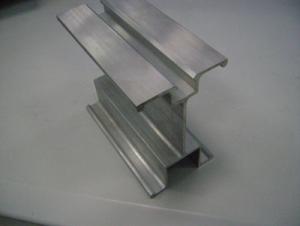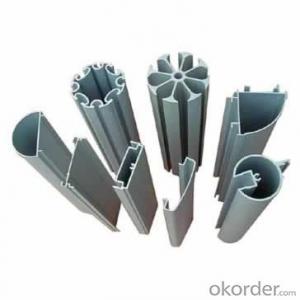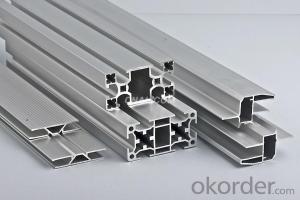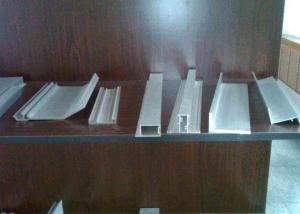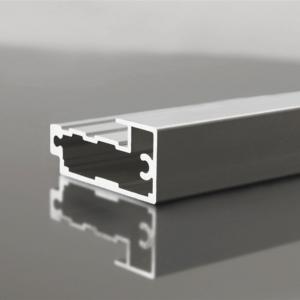T-Slotted Structural High Quality Aluminum Profiles - Hot Sale
- Loading Port:
- China Main Port
- Payment Terms:
- TT OR LC
- Min Order Qty:
- -
- Supply Capability:
- -
OKorder Service Pledge
OKorder Financial Service
You Might Also Like
Aluminium profile
1) Alloy: AA6061, AA6063
2) Temper: T5, T6
3) Series of surface treament:
1. Mill Finished
2. Anodizing: Silver, champagne, light bronze, dark bronze, black, light titanium, dark titanium.
3. Electrophoretic Coating: Silver, champagne, bronze, black, light bronze, dark bronze.
4. Electrostatic Color Powder Coating: Normal color, special color.
5. Fluorocarbon Powder Spraying: Normal color, special color.
6. Wood Grain Coating: Import paper, domestic paper.
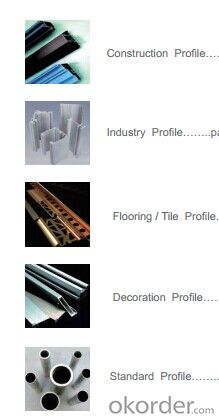
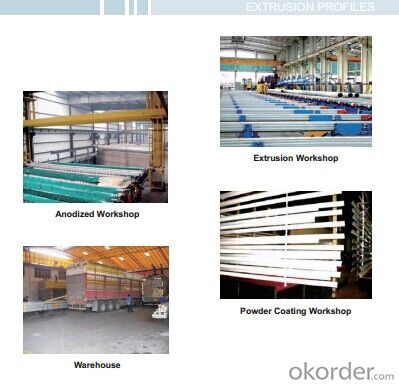
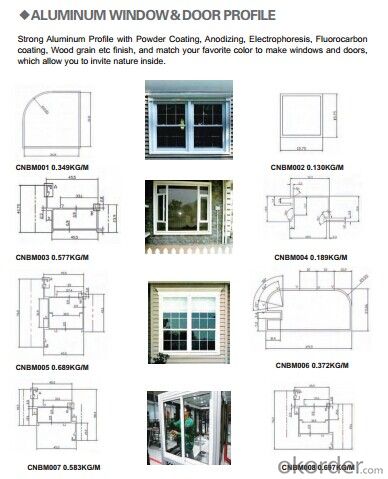
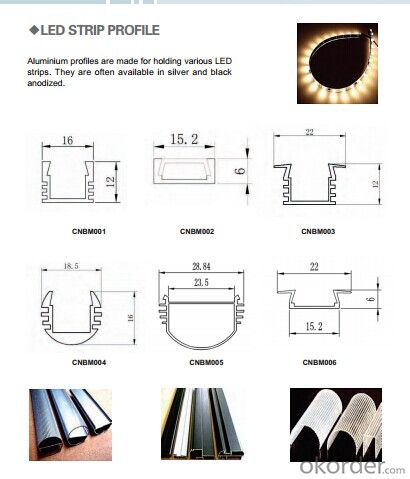
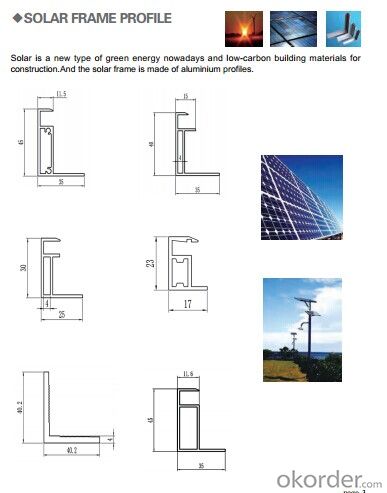
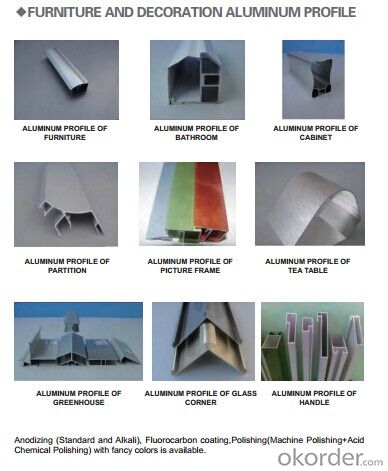
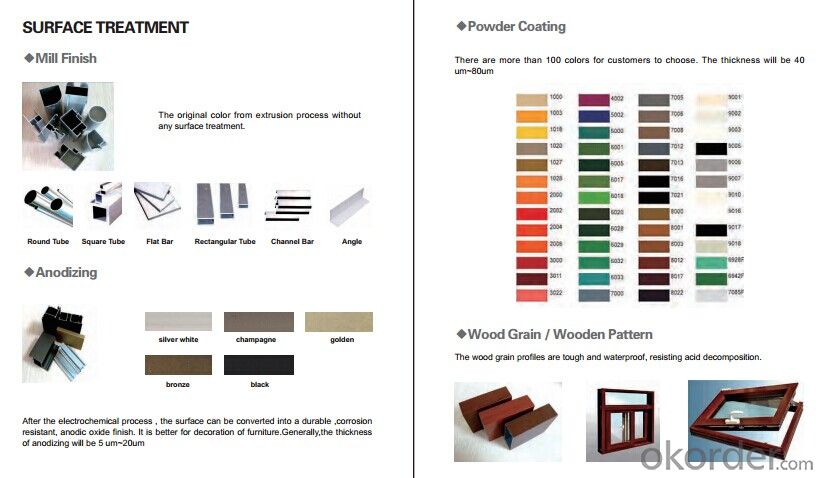
- Q: This question asks about the various types of aluminum profiles that are utilized in the construction of insulation systems.
- <p>Aluminum profiles used for building insulation come in various types, each serving specific functions. These include: 1. Insulation profiles, which provide a thermal barrier; 2. Structural profiles, used for structural support; 3. Cover profiles, which protect the insulation material; 4. Joint profiles, used for sealing joints; 5. Corner profiles, for reinforcing corners; 6. Edge profiles, for finishing edges; and 7. Special profiles, designed for specific applications. Each type is engineered to enhance thermal efficiency and structural integrity in building insulation systems.</p>
- Q: Where is the aluminum profile market in Tianjin?
- Fen Shui Dao aluminum tube, aluminum strip,,,Tianjin Hongyuan Aluminum Co. ltd..Main business products: industrial aluminum series and its accessories, aluminum accessories, aluminum frame, table, line, standard, European standard and non-standard aluminum industrial profiles and accessories, free drawings analysis, drawing and mold production, a series of industrial aluminum frame, assembly line etc..
- Q: Are aluminum profiles suitable for use as interior finishing materials, specifically for flooring and wall panels?
- <p>Yes, aluminum profiles can be used for interior finishing materials such as flooring and wall panels. They are known for their durability, low maintenance, and resistance to corrosion. Aluminum profiles are lightweight, easy to install, and can be used in various designs and styles, making them a popular choice for modern interior design. They also offer the advantage of being recyclable and environmentally friendly.</p>
- Q: Is it possible to recycle aluminum profiles repeatedly without a substantial loss in their quality or functionality?
- <p>Yes, aluminum profiles can be recycled multiple times without significant degradation in performance. Aluminum is highly recyclable, and the recycling process does not compromise its properties. In fact, recycled aluminum maintains the same strength, durability, and malleability as new aluminum. This makes it an environmentally friendly material, as it reduces the need for mining new aluminum and conserves resources.</p>
- Q: What are the different colors available for aluminum profiles?
- There are several different colors available for aluminum profiles, allowing for endless possibilities in design and aesthetics. Some of the most common colors include silver, black, bronze, and white. These colors are achieved through various finishing techniques such as anodizing and powder coating. Anodizing involves creating a protective oxide layer on the surface of the aluminum, which can be dyed to achieve different colors. Powder coating, on the other hand, involves applying a dry powder paint to the aluminum and then curing it under heat, resulting in a durable and vibrant finish. Additionally, custom colors can also be created through the use of specialized coatings and finishes. Overall, the availability of different colors for aluminum profiles allows for versatility in architectural, industrial, and decorative applications.
- Q: What are the different accessories available for aluminum profiles?
- Aluminum profiles offer a vast selection of accessories that can enhance their functionality and versatility. Included in this range are: 1. T-nuts: These facilitate threaded connections within the profiles, allowing for easy attachment of components like brackets, panels, and fasteners. 2. Corner connectors: These enable the joining of aluminum profiles at right angles, creating sturdy and rigid structures. They come in different designs, including external and internal corner connectors. 3. End caps: These seal the open ends of aluminum profiles, giving them a polished appearance and protecting against dust, debris, and potential injuries. 4. Brackets and fasteners: Essential for securing and supporting components within the profiles, these come in various shapes and sizes to suit different applications. 5. Panel mounts: Offering a secure and convenient way to attach panels or other flat surfaces, panel mounts can be easily adjusted or removed as needed. 6. Hinges and handles: Commonly used for attaching doors, lids, or covers to aluminum profiles, hinges allow for smooth opening and closing, while handles provide a comfortable grip. 7. Cable management solutions: Accessories like cable clips, cable ducts, and cable ties keep wires and cables organized within the profiles, ensuring a neat and professional appearance. 8. Leveling feet and casters: Useful for mobile structures or those requiring stability on uneven surfaces, leveling feet adjust the height and ensure stability, while casters provide mobility. 9. LED lighting solutions: Aluminum profiles are often used for LED lighting applications, and various accessories are available to integrate lighting strips, diffusers, and connectors for a seamless and professional lighting solution. 10. Sensors and switches: Accessories like sensor mounts and switch brackets are designed to integrate sensors or switches into aluminum profiles, allowing for easy installation and integration into automation or control systems. These examples represent just a fraction of the numerous accessories available for aluminum profiles. With such a wide selection, customization and adaptation to specific needs and applications are easily achievable, making aluminum profiles a dependable and versatile choice for various industries and projects.
- Q: This question asks if aluminum profiles can be utilized in the construction of exterior walls and roofs.
- <p>Yes, aluminum profiles are commonly used in exterior walls and roofs due to their durability, corrosion resistance, and low maintenance requirements. They offer a lightweight alternative to traditional materials and can be designed to withstand various weather conditions. Aluminum profiles are also recyclable, contributing to their sustainability. They are often used in modern architecture for both aesthetic and functional purposes, such as in curtain walls, window frames, and roofing systems.</p>
- Q: Are aluminum profiles suitable for cleanroom partitions?
- Yes, aluminum profiles are suitable for cleanroom partitions. They offer a lightweight and durable solution that is resistant to corrosion and easy to clean, making them ideal for maintaining a clean and sterile environment in cleanrooms. Additionally, aluminum profiles can be customized to fit specific requirements, allowing for flexibility in design and construction.
- Q: This question asks for the method to determine the quantity of aluminum profiles required for a construction project.
- <p>To calculate the amount of aluminum profiles needed for a building project, follow these steps: 1. Determine the architectural design and specifications of the project to understand where aluminum profiles will be used. 2. Measure the dimensions of the areas requiring aluminum profiles, such as window frames, door frames, or structural supports. 3. Calculate the total linear footage of aluminum needed by multiplying the length of each profile by the number of profiles required. 4. Factor in additional materials for joints, connections, and potential waste. 5. Consult with suppliers or use industry-standard conversion factors to determine the weight or volume of aluminum profiles based on the linear footage. 6. Review the calculations and adjust for any changes in the project design. This process ensures you have the correct amount of aluminum profiles for your construction needs.</p>
- Q: How do you join two aluminum profiles together?
- There are several ways to join two aluminum profiles together, depending on the desired strength, appearance, and functionality of the joint. Here are a few common methods: 1. Mechanical Fasteners: One of the simplest and most common methods is to use mechanical fasteners such as screws, bolts, or rivets. These fasteners can be drilled through both profiles and tightened to securely hold them together. It is important to choose the appropriate size and type of fastener based on the thickness and material of the profiles. 2. Welding: Welding is another popular method for joining aluminum profiles. It involves melting the aluminum at the joint and allowing it to solidify, creating a strong bond between the two profiles. There are different types of welding techniques that can be used, such as TIG (Tungsten Inert Gas) welding and MIG (Metal Inert Gas) welding, depending on the specific application and requirements. 3. Adhesives: Adhesive bonding is a non-invasive method for joining aluminum profiles. Specialized adhesives designed for bonding aluminum can be applied to the surfaces of the profiles and then pressed together. This type of joint is particularly useful when a seamless appearance is desired, as it eliminates the need for visible fasteners or welds. However, the strength of the adhesive bond may vary depending on the type of adhesive used. 4. Interlocking Systems: Some aluminum profiles are designed with interlocking systems that allow them to connect easily. These systems typically involve the use of connectors or accessories specifically designed for the profiles being used. They can provide a secure and sturdy joint while also simplifying the assembly process. When deciding how to join two aluminum profiles together, it is important to consider factors such as the strength requirements, aesthetics, ease of assembly, and disassembly if necessary. Additionally, it is recommended to consult with professionals or experts in aluminum fabrication to ensure the chosen method is appropriate for the specific application.
Send your message to us
T-Slotted Structural High Quality Aluminum Profiles - Hot Sale
- Loading Port:
- China Main Port
- Payment Terms:
- TT OR LC
- Min Order Qty:
- -
- Supply Capability:
- -
OKorder Service Pledge
OKorder Financial Service
Similar products
Hot products
Hot Searches
Related keywords
